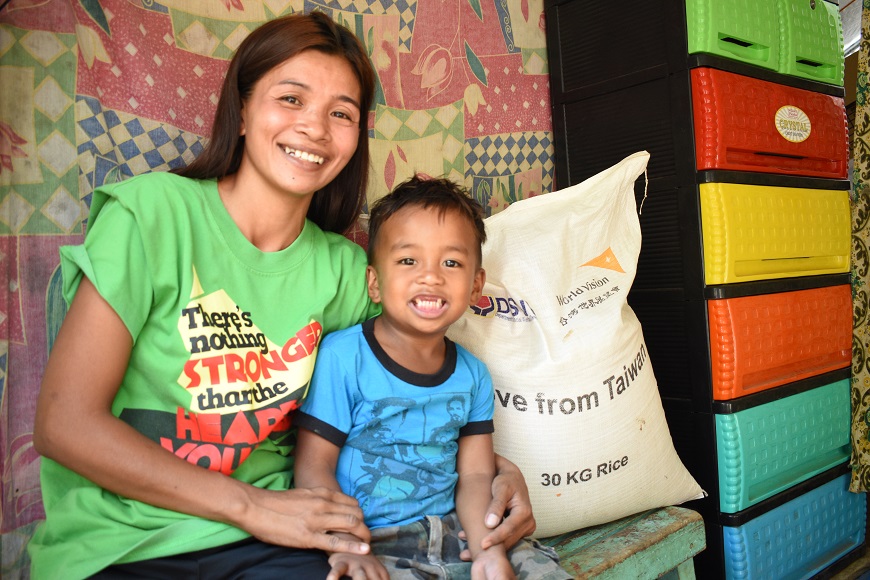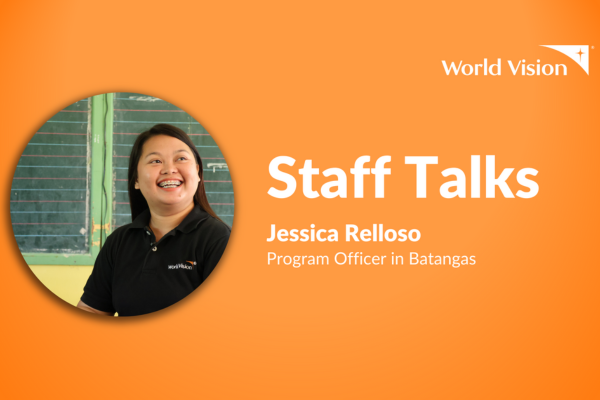World Vision and DSWD distribute 10,000 rice sacks to quake-affected families in North Cotabato

Jenny Ann, with her youngest child, is thankful to receive the 30-kg rice assistance from World Vision. Photo by Rex Rubio
To help families cope with the impact of the multiple earthquakes in North Cotabato last year, World Vision, in partnership with the Department of Social Welfare and Development (DSWD) and logistical support from Wan Hai Lines, distributed 10,000 sacks of rice donated by the Taiwanese government.
“Even three months after the earthquakes, food security is still a concern among families. A lot of them not only lost their homes but also their livelihoods, hence, the struggle to provide the basic needs of their families, especially their children,” shares Franklyn Salindato, World Vision response manager for the earthquake response.
According to the National Disaster Risk Reduction and Management Council (NDRMMC), the earthquakes last October 2019 affected about 350,000 people, including 60,000 who stayed in the evacuation centres. At least 50,000 houses were also either totally or partially damaged.
“To date, we have already reached about 5,000 families with this initiative and we will continue to reach more in the coming days,” Salindato adds. Each sack contains 30 kilos of rice.“My husband earns P250 a day as a laborer in a banana plantation. With the rice assistance, we can spare enough money to buy other needs such as grocery items,” says Jenny Ann, a mother of two. Her family is still staying in an evacuation center after her house was damaged by the quake.
The rice distribution project complements World Vision’s recently concluded cash-based programming in the municipalities of Kidapawan, Makilala and Tulunan. At least 1000 families were provided with P2000 (USD40) either through the cash-for-work (CFW) project or the unconditional cash transfer initiative where direct cash assistance is provided to the most vulnerable families.
In the last three months, World Vision has also implemented multi-sectoral interventions including distribution of non-food items such as hygiene kit, mosquito net, mats, blankets, emergency shelter kit, provision of psychosocial support to children through child-friendly spaces and educational support through learners’ kits and temporary learning spaces.
When you give where it’s needed most you’ll help Filipino children and their communities rise above poverty. Because it’s life-changing when you finally have clean water, get the right kind of food, feel safe, learn in a classroom, or grow spiritually and discover that you are loved, known and cared for.
Your gift will go where it will make the biggest difference, meeting urgent needs that might otherwise go unmet.








